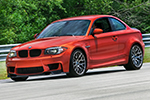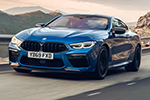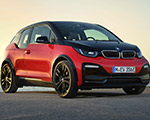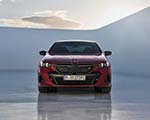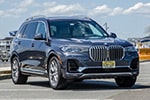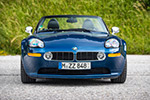It is often said that BMW’s future success primarily depends on advancements in sustainable technologies, like battery electric powertrains and hydrogen fuel cells. However, the Bavarian automaker is also making equally consequential investments in software, artificial intelligence, cloud computing, and connectivity. This is because the barriers to entry for electric vehicles are lower compared to internal combustion engine vehicles, thereby making it harder for OEMs to differentiate on hardware alone.
Indeed, a McKinsey study revealed that 59 percent of luxury car buyers in China—BMW’s biggest market—are willing to switch brands for superior connectivity features. Meanwhile, an S&P survey found that over 85 percent of drivers desired touchscreens, with almost 35 percent even endorsing pillar-to-pillar displays (akin to the Mercedes-Benz 56-inch “Hyperscreen” seen in the EQS).
BMW, for its part, has been transitioning towards a screen-heavy interface in recent years, with the latest iDrive (iDrive X) as a prime example. It features a 17.9-inch center screen, pillar-to-pillar Panoramic Display and 3D head-up display (HUD). Furthermore, the iDrive controller has been eliminated, and the majority of functions are operated via touch, voice or haptic control. Notably, the new system’s demo suggests BMW may finally have a digital ecosystem comparable to Tesla’s.
Touchscreens: More Dangerous Than Drunk Driving?
As yet, there’s also a downside to consider — screen-heavy interiors pose significant distraction and safety risks. Case in point: a test by Swedish car magazine Vi Bilägare demonstrated that basic tasks like changing radio stations and adjusting climate control in a 2005 Volvo V70 with physical controls required less time looking off the road than touchscreens in the Tesla Model 3, the BMW iX, and the Volkswagen ID.3.
Similarly, an IAM RoadSmart study found that using touchscreens with Apple CarPlay/Android Auto slowed drivers’ reaction times more than alcohol or cannabis. To be precise, while drunk driving reduced reaction time by 12 percent and marijuana by 21 percent, CarPlay/Android Auto impaired it by over 50 percent. Even voice commands through these systems resulted in a reaction time reduction of over 30 percent.
That being said, much of this also stems from the fact that most automakers’ software interfaces and UI/UX are complex and unintuitive. This is especially true for legacy German carmakers like BMW and VW Group, who were initially slow to recognize the importance of software-defined vehicles — remember, BMW managed a mediocre tenth-place ranking in the Wards Intelligence 2023 SDV Study, where Tesla, Rivian, NIO, and Lucid led the list.
Of course, Germany doesn’t possess the same breadth of I.T. capabilities as America, China, or even India, meaning BMW faces various systemic issues that are frankly beyond its control. Nonetheless, the Bavarian OEM still needs to find a way to navigate these obstacles.
It’s All About Safety
At the end of the day, the World Health Organization (WHO) reports a staggering 1.19 million road accident fatalities each year, costing countries three percent of their gross domestic product (GDP). While distracted driving isn’t the sole cause of accidents, it remains a leading factor, alongside issues such as unsafe vehicles, poor road infrastructure, weak law enforcement, and speeding. In the United States, for instance, distracted driving was linked to at least eight percent of fatal car accidents in 2022.
As a responsible corporate citizen, BMW has to ensure its vehicles and customers don’t contribute to this escalating problem. The Munich-based OEM anyway has a reputation for aggressive driving—a perception best captured by a Wall Street Journal headline that proclaimed, “BMW drivers really are jerks.” A complex user interface that makes its cars harder to operate would only exacerbate the issue.










































